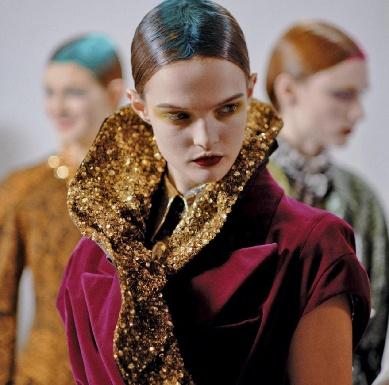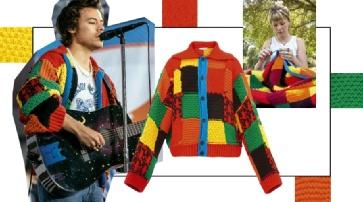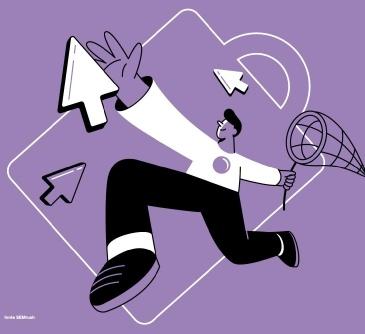
14 minute read
La moda deve tornare all’autenticità, Fashion must return to authenticity, with a pinch of TikTok
from Foto Shoe 30 2021-01
by edizioniaf
LA MODA DEVE TORNARE ALL’AUTENTICITÀ,
CON UN PIZZICO DI TIKTOK
FASHION MUST RETURN TO AUTHENTICITY, WITH A PINCH OF TIKTOK
Le nuove sfide del mondo della moda secondo la visione di alcuni grandi suoi protagonisti, da Frida Giannini a Dries Van Noten e Casey Cadwallader di Mugler, dall’ ‘enfant terrible’ della Maison Balmain, Olivier Rousteing, al Managing Director di TikTok Adriano Accardo, senza dimenticare i fondatori di due delle maggiori showroom italiane, Riccardo Grassi e Massimo Bonini. New challenges in the world of fashion according to the vision of some of its leading protagonists, from Frida Giannini to Dries Van Noten and Mugler’s Casey Cadwallade, from the ‘enfant terrible’ at Maison Balmain, Olivier Rousteing, to the Managing Director of TikTok, Adriano Accardo, without forgetting about the founders of Italy’s two leading showrooms, Riccardo Grassi and Massimo Bonini.
L’avvento del Covid-19 ha segnato inevitabilmente un punto di svolta anche nel mondo della moda, accelerando trend già in atto e facendo emergere e affermare nuovi bisogni e orientamenti da parte del consumatore. La riflessione sui nuovi percorsi della moda è stata al centro di molti incontri virtuali e webinar, come quello di Class Agorà intitolato ‘Next generation: dai designer ai social media’. Dopo anni di silenzi e lontana dai riflettori, l’ex Fendi e direttrice creativa di Gucci, Frida Giannini, chiamata ad aprire i lavori, ha sottolineato come negli ultimi cinque anni siano avvenuti cambiamenti epocali che hanno interessato il mondo della moda, con marchi esplosi in tempi brevissimi grazie ad azzeccate operazioni di marketing e commerciali, al successo di pochi ‘pezzi’ diventati protagonisti sui social media, ma anche con un’overdose di logo e designer saliti alla ribalta a colpi di follower e personaggi più o meno noti ai front show. Secondo la Giannini, l’avvento della pandemia sembra aver portato a riflettere più a fondo sul vero concetto di moda e di lusso in particolare, distinguendo tra brand destinati ad un successo effimero, in quanto fondati su mode The outbreak of Covid-19 unavoidably marked a turning point also in the world of fashion, fuelling not only those trends already underway, but also causing new customer needs and orientations to emerge and take root. Discussions regarding these new pathways in fashion have been at the centre of many virtual meetings and webinars, like that of Class Agorà entitled ‘Next generation: from designers to social media’. After many years of silence and far from the spotlights, former Fendi employee and Gucci Creative Director Frida Giannini, who was called upon to give the opening speech, underlined how over the last five years a number of epic changes have occurred in the world of fashion, with brands bursting onto the scene in a very short amount of time, thanks to strategic marketing and sales operations and to the success of just a few ‘pieces’ becoming the protagonists of social media, while an overwhelming number of logos and designers have risen to the top, thanks to numerous followers and more or less famous figures at premiere showings.

Dries Van Noten ss2021
Dries Van Noten Collection
momentanee e sulla popolarità regalata da social media e influencer, e marchi che fanno vera ricerca e innovazione, che conoscono a fondo il lavoro, la materia, la sartorialità, l’artigianalità. La moda, e la pandemia lo ha reso ancor più evidente, deve tornare alle origini, all’autenticità, al ben fatto. E questo richiede i suoi tempi. Un tema, quello dei tempi della moda, che è stato al centro del cosiddetto ‘manifesto’ di Dries Van Noten, che potremmo riassumere nel motto ‘produrre meno e produrre meglio’. “Durante il primo lockdown ci siano resi conto che era tutto troppo veloce. C’era troppo di tutto e il piede era sempre premuto sull’acceleratore – afferma il celebre stilista belga -. Sentivo il bisogno di rallentare. I clienti non sapevano più cosa cercare in negozio, le vetrine proponevano pellicce in estate e abiti leggeri in inverno, e soprattutto era venuto meno il valore di ciò che facevamo. L’avvento della pandemia ha di colpo portato il mondo a rallentare e a riflettere e questo è andato anche a vantaggio della sostenibilità”. “Siamo tornati all’essenza della moda, alla creatività vera e non solo a pensare al business. Oggi i clienti cercano capi più esperienziali e destinati a mantenere il loro valore nel tempo. Si è anche ritornati a creare a chilometro zero là dove ci sono persone in grado di dar vita, con le loro mani, a creazioni meravigliose”. Casey Cadwallader, designer di Mugler, parla di ‘See now, buy now’ o ‘Jump and done’ (cioè salti dentro la vetrina e l’oggetto è pronto). La moda torna quindi vicina al consumatore che cerca e desidera un abito o un accessorio nel momento in cui lo compra, e va così a ripensare una timeline che non funzionava più. Le collezioni stesse diventano più reali, concrete e dirette. Il manifesto sulla slow fashion è condiviso anche dall’enfant terrible Olivier Rousteing, direttore creativo di Balmain: “La pandemia ci ha obbligati a essere più creativi e, al contempo, a guardare all’heritage del brand. Il cliente vuole autenticità e qualcosa di timeless in un periodo dominato dall’instabilità”. Olivier ha anche sottolineato l’importanza di una moda sempre più inclusiva e genderless, lui che ha vestito le cur According to Giannini, the outbreak of the pandemic seems to have shined the spotlight with greater insight onto the true concept of fashion and luxury in particular, distinguishing between those brands destined for fleeting success, since they are founded on temporary trends and the popularity of social media and influencers in that precise moment, and those brands that are genuinely geared towards research and innovation, with a true understanding of the processes, materials, sartorial elegance, and craftsmanship that goes into these products. Fashion and the pandemic have made it clearer than ever before that there must be a return to origins, authenticity, and well-made products. And all this requires time. The timing of fashion is a theme that was at the centre of the socalled ‘manifesto’ of Dries Van Noten, which can be summed up with the motto ‘produce less, produce better’. “During the first lockdown, we realised that everything was too fast. There was too much of everything and our foot was always with the pedal to the metal – confirms the legendary Belgian stylist - I felt the need to slow down. Customers no longer knew what to look for in stores, with store windows proposing furs in the summer and lightweight dresses in the winter, and above all, the value of what we were doing was failing. The outbreak of the pandemic suddenly made the world slow down and reflect and this also worked to the advantage of sustainability”. “We have returned to the essence of fashion and genuine creativity, so it is no longer only about business. Today, customers look for garments that are more experiential-oriented and destined to maintain their value over time. There has also been a return to kilometre-zero production, where skilled individuals give life to wonderful creations with their hands”. Casey Cadwallader, designer at Mugler, speaks on ‘See now, buy now’ or ‘Jump and done’ (jump into the store window and the object is ready). Fashion accordingly becomes closer to the consumer looking for a dress or accessory suitable for that particular moment in time, while creating the need to rethink a timeline that no longer

Harry Styles Cardigan JW Anderson

ve esplosive di Kim Kardashian, ma che amerebbe anche interpretare lo stile vincente della nuova vice-presidente degli Stati Uniti, Kamala Harris. Secondo Van Noten, anche il retail è cambiato con la pandemia, tanto che lui stesso ha di recente aperto uno store di nuova concezione a Los Angeles, con grandi metrature e multifunzionale: “Il futuro non sarà tutto solo virtuale, tutto e-commerce, ma ci sarà ancora un ampio spazio per i negozi fisici, per i brick-and-mortar, che vanno però ripensati”. Lo stilista ha creato a L.A. uno spazio dove non si vendono solo abiti, ma si organizzano mostre d’arte, presentazioni con pittori che dipingono sulle pareti, dove è presente un’area musicale in cui ascoltare e fare musica, spazi dove ci si può esprimere attraverso le arti applicate, e persino degli spazi-archivio dove presentare pezzi delle passate collezioni o portare abiti second hand. “È un luogo di contaminazioni, dove vengono persone per vedere, ascoltare…”. La stessa vendita online, secondo lo stilista, avrà un ruolo diverso nel prossimo futuro. “L’e-commerce è un canale psicologicamente diverso rispetto al brick-and-mortar, su cui compri cose diverse rispetto al canale fisico. Sono due canali paralleli ma diversi”. Van Noten afferma che il punto vendita virtuale non deve diventare uno spazio ombra dedicato solo allo sconto e all’affare, ma dovrà sempre più essere un canale dove si compra qualcosa di diverso, mentre lo store fisico sarà il luogo delle emozioni, dove si acquistano abiti esperienziali: “Negli anni 90 era diventato tutto flagship store, mentre oggi abbiamo la possibilità di comunicare in modo diverso, con canali di vendita diversi”. È interessante anche l’interpretazione che ha dato del digitale lo spazio Bonini in ottica post-pandemia, con la creazione di veri e propri eventi in showroom in grado di trasmette in modo molto definito e forte il concept di ogni brand. Questo modo di trasportare il ‘fisico nel digitale’ ha avuto un ottimo riscontro e verrà riproposto anche nel prossimo futuro. Riccardo Grassi, dell’omonimo showroom milanese, è addirittura dell’opinione che anche quando l’epidemia sarà passata, le presentazioni delle collezioni in digitale resteranno a coprire comunque un 2030 per cento del totale, così come cambierà inevitabilmente il valore stesso delle Fashion Week internazionali. Il digitale è anche al centro della presentazione della collezione di Mugler, con un video celebrativo di grande impatto che ha registrato il numero record di 1,3 milioni di visualizzazioni, e che Cadwallader definisce ‘una pillola di entertainment’ che potrà probabilmente essere rielaborata ed ‘esplosa’ anche in futuro, dopo la fine della pandemia. E poi c’è il grande tema dei nuovi social media, a cominciare da TikTok, works. The collections themselves become more real, concrete, and direct. The slow fashion manifesto is also shared by enfant terrible Olivier Rousteing, creative director at Balmain: “The pandemic forced us to be more creative, while at the same time looking to the heritage of the brand. Customers want authenticity and something timeless in a period dominated by instability”. Olivier also underlined the importance of an increasingly inclusive and genderless fashion. Not only has he dressed the explosive curves of Kim Kardashian, but he would also love to interpret the winning style of the new United States Vice President, Kamala Harris. According to Van Noten, even retail has changed with the pandemic, insomuch that he himself recently opened a new cutting-edge store in Los Angeles that is both multifunctional and of immense dimensions. “The future will not only be virtual and exclusively e-commerce. There’s also a lot of room for physical stores, for brick-andmortar boutiques, which however must be revamped”. In L.A., the stylist has created a space where not only clothes are sold, but also where art exhibitions are organised, presentations are given with artists painting the walls, and music can be played and listened to in a music room. There are also spaces where self-expression is made possible through the applied arts and an archive area where pieces from past collections can be presented or where second-hand items can be brought. “It is a space of contaminations, where people come to see, listen…”. Online sales themselves, according to the stylist, will play a different role in the near future. “E-commerce is a psychologically different channel from brick-and-mortar, offering the possibility to buy items that are different from those available in the physical store. They are two parallel, yet different, channels”. Van Noten emphasises that the virtual sales channel must not become a shadow area dedicated only to discounted items and deals, but should always remain a channel that offers the possibility to purchase something different, while the physical store will represent a place of emotions, where it’s possible to purchase experiential clothing: “In the 90’s, everything became a flagship store, while today we have the possibility to communicate in a diverse way using different sales channels”. Likewise interesting is the digital spin on presentations given by the Bonini space in this post-pandemic period, with the organisation of bona fide events in showrooms that capably convey in a clear and definite way the concept of every brand. This way of transporting ‘physical into digital’ has met up with excellent results and will also be re-proposed in the future. Riccardo Grassi, with his self-named Milan showroom, believes that even when the epidemic is over, the digital presentation of collections will continue in any case to represent 20-30 percent of the total, while also the fabric itself of international Fashion Weeks will unavoidably be changed. Digital is also at the centre of the presentation of the Mugler collection, with a celebrative video of great impact that registered a record number of 1.3 million page views. Defined by Cadwallader as a ‘rare gem of entertainment’, it could probably be re-elaborated and ‘blown up’ also in the future, at the end of the pandemic. There is then the leading theme of new social media channels, starting from TikTok, which today counts almost 100 million active monthly users and 2000 employees in Europe, while increasingly stealing the show from Instagram and Facebook, above all among the generation of Millennials and GenZ, who are especially important for the world of fashion because they are leading the way in the luxury segment (in 2019, 100% of
Gucci TikTok #Accidental Influencer Frida Giannini
che oggi conta quasi 100 milioni di utenti attivi mensili e 2000 dipendenti in Europa e che sta sempre più rubando la scena ai vari Instagram e Facebook, soprattutto tra le generazioni dei Millennial e la GenZ, particolarmente importanti per il mondo della moda perché alla guida della crescita del lusso (nel 2019 il 100% della crescita globale del lusso è riconducibile a loro). Secondo Adriano Accardo, Managing Director di TikTok GBS (Global Business Solutions) Southern Europe, la chiave del successo del social più amato dai giovanissimi (e non solo), è che ha saputo democratizzare la creatività e questo ha permesso di dar vita a continue nuove tendenze… Per questo TikTok è ‘naturalmente’ affine al mondo della moda, che infatti se ne sta sempre più innamorando, da Moncler che ha usato Will Smith come influencer, anzi come ‘creator’ come lo definisce Accardo, a Prada, Vuitton, Gucci, Mugler. Anche il tipo di comunicazione che TikTok offre è diverso da quello dei suoi diretti ‘concorrenti’. Secondo Accardo, infatti, TikTok si distingue per un modo di comunicare più spontaneo, più reale, autentico e, perché no, meravigliosamente imperfetto, oltre che inclusivo dal momento che tutti possono essere creators, non solo gli influencer. Ne è un esempio esemplificativo Burberry, che ha chiesto alla community di giocare con il proprio logo in modo divertente, spontaneo, e innovativo. Oppure Gucci, che con l’hashtag ‘Accidentally influencer’ ha scelto come modelle due signore ‘forever young’ o diversamente giovani, che ballano allegramente e in modo spontaneo. Si passa quindi dall’irraggiungibile perfezione dei servizi fotografici con modelle impeccabili e bellissime, a una comunicazione più spontanea, giocosa, vulnerabile e inclusiva, che svela tra l’altro nuovi aspetti della personalità del brand. Capire il linguaggio della piattaforma diventa quindi fondamentale per sfidare i limiti della creatività. Tanto più che i trend che nascono su TikTok spesso trascendono e vanno oltre i confini della piattaforma. Basti pensare all’hashtag ‘HarryStylesCardigan’ di J W Anderson che nasce in piattaforma, diventa virale con 38,6 milioni di visualizzazioni, ed esce dal digitale lanciando il marchio che offre alla community le istruzioni per crearsi il proprio cardigan a casa.
Mugler ss2021
global growth in luxury fashion can be traced back to them). According to Adriano Accardo, Managing Director at TikTok GBS (Global Business Solutions) Southern Europe, the key to success of this social network that is highly beloved by the very young (among others), is that it managed to democratize creativity, and this allowed life to be given to constantly new trends… For this reason, TikTok is ‘naturally’ in sync with the world of fashion, which in fact is increasingly enamoured of this social network, from Moncler that used Will Smith as an influencer, or rather as a ‘creator’ (the term coined by Accardo), to Prada, Vuitton, Gucci, and Mugler. Even the kind of communication that TikTok offers is different from that of its direct ‘competitors’. In fact, according to Accardo, TikTok stands out for its more spontaneous, real, and authentic way of communicating, which is also wonderfully imperfect, as well as inclusive since everyone can be a creator, and not just influencers. A prime example of this is Burberry, which asked its community to play around with its logo in a fun, spontaneous, and innovative way. Then, there is Gucci, which with the hashtag ‘Accidentally influencer’, chose two ‘forever young’ models or ‘differently-young’ ladies to dance around cheerfully and spontaneously. So there is a move from the unachievable perfection of professional photoshoots with flawless and extremely beautiful models to that of a spontaneous and playful communication that is vulnerable and all-inclusive, while revealing new sides of the brand’s personality. Understanding the language of the platform accordingly becomes fundamental in challenging the limits of creativity. This is true to the extent that the trends that are conceived on TikTok often surpass and go beyond the platform itself. One example is the hashtag ‘HarryStylesCardigan’ of J W Anderson that was first conceived on the platform, and which subsequently became viral with 38.6 million page views, emerging from the digital channel to then launch the brand that offers its community instructions on how to create their very own cardigans at home.




